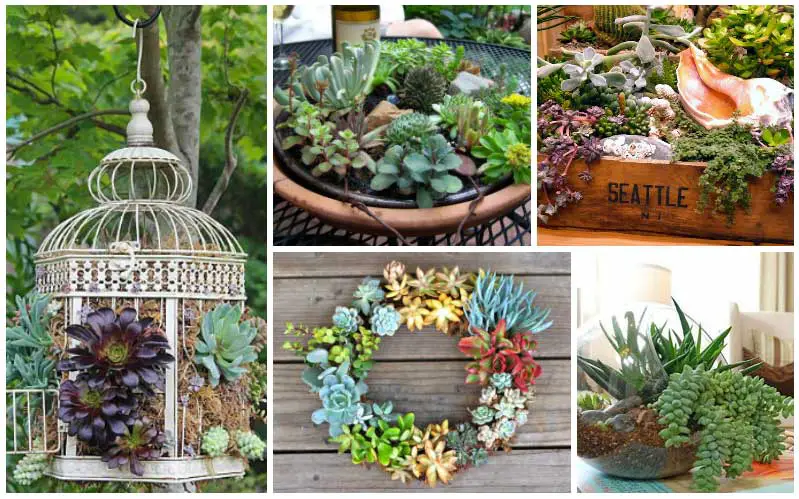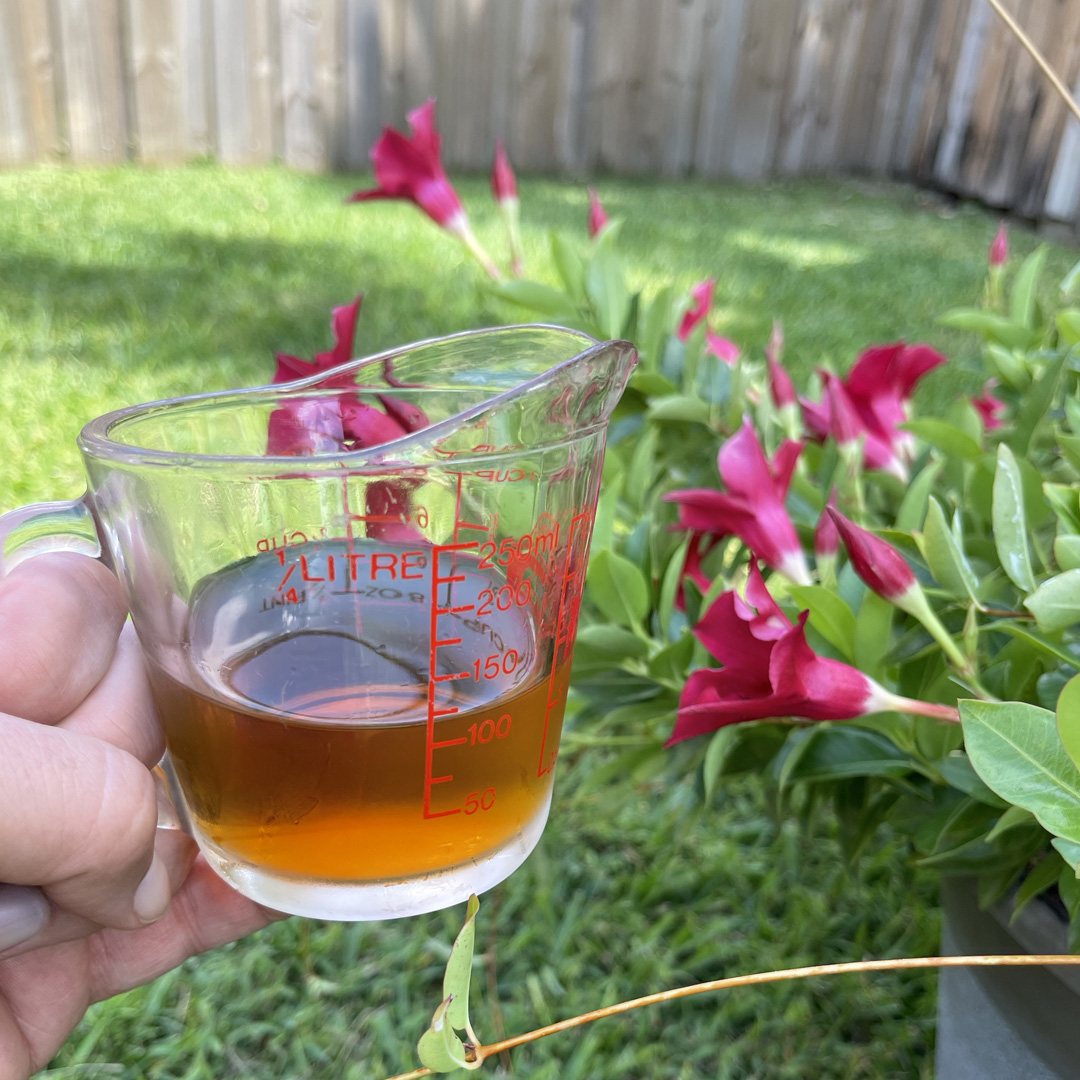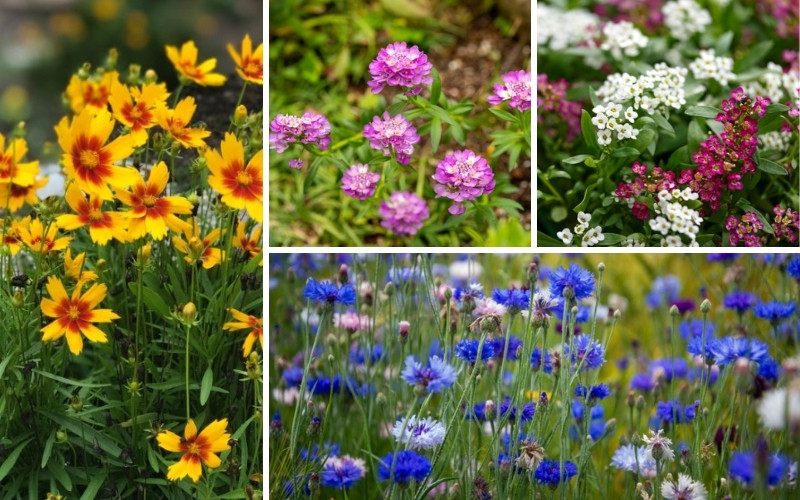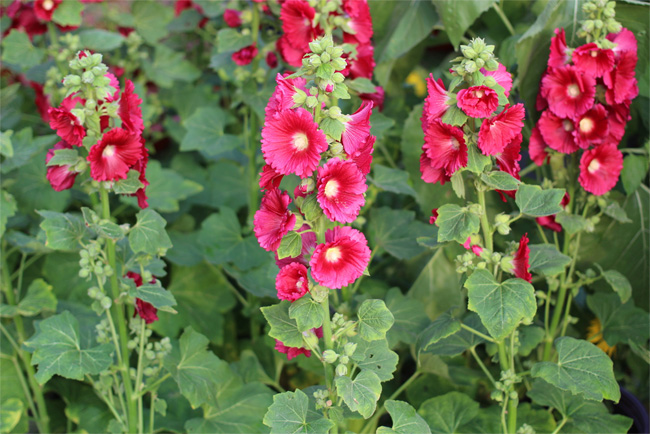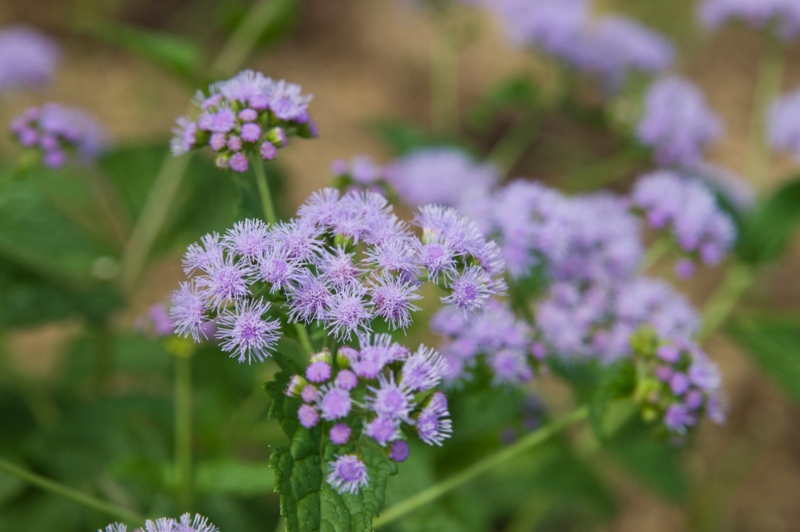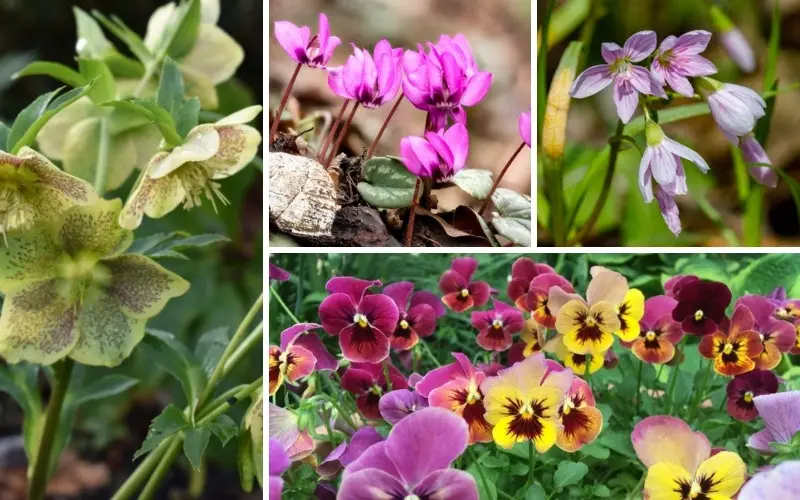
Blooming plants are the best thing about spring. They signify the end of the long dark winter and usher in brighter days. Thanks to early spring bloomers, you don’t have to wait long into the season to enjoy a colorful garden or lawn.
With the right choice of plants, your garden will remain vibrant throughout the season. The key is to get the timing right and choose the suitable plants for your growing zone.
The following are some of the best plants for early Spring blooms!
Lily of the Valley
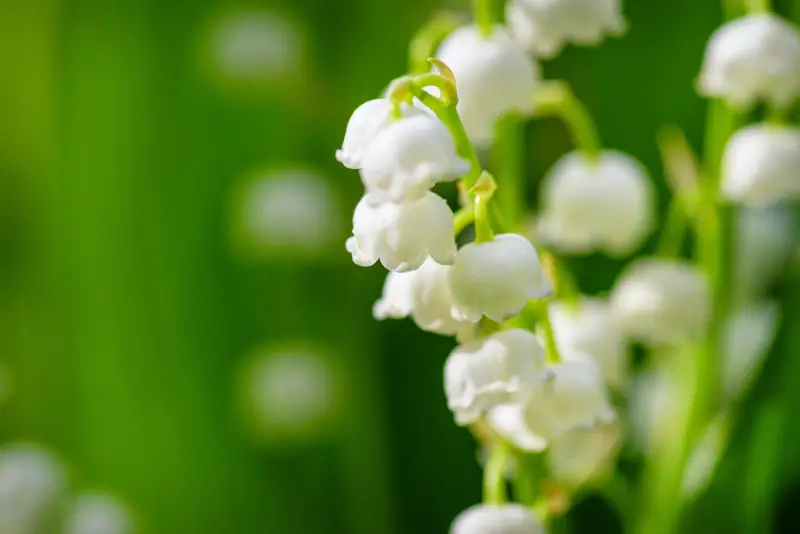
Lily of the valley is a perennial flower that grows well in USDA plant hardiness zones 2-9. It grows to between 12-22 inches tall and has slender stems and elliptical leaves. When in bloom, white or pink bell-shaped flowers cover the stems.
The blooms are quite fragrant, so they’re great for bringing pollinators to your garden early in the season. Lily of the valley grows well in moist, fertile, and well-drained soil. It’ll thrive in partial shade, so plant it underneath shrubs or trees.
If exposed to the full sun a lot, keep the soil moisturized. Late fall is the best time to plant lily of the valley to bloom in early spring.
Snowdrops
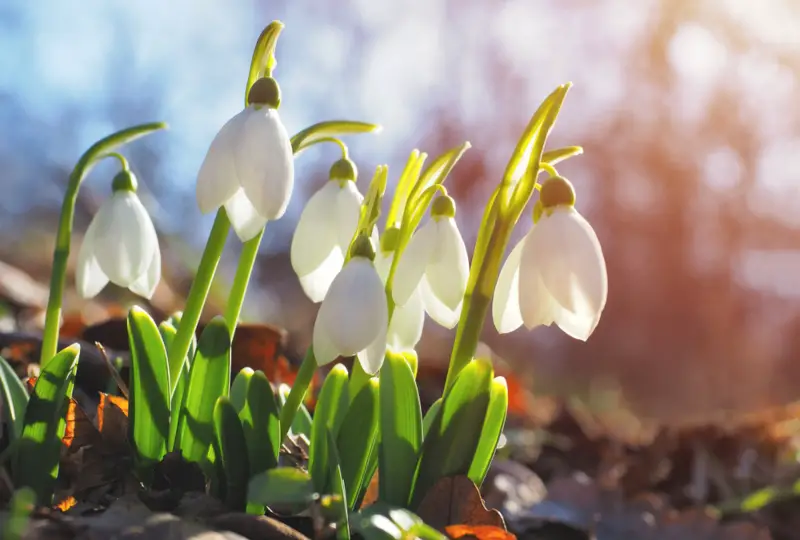
Snowdrops bloom drooping bell-shaped flowers at the end of stems that can be 4-8 inches tall. The flowers are bright white, with spots of bright green in the inner petals.
Since snowdrops do well in cold weather, they’re perfect for growing in USDA hardiness zones 3-8. Planting them in the shade also creates the best conditions for their growth. The soil should be adequately moist, well-drained, and fertile.
With the right conditions, you’ll have an easy time growing snowdrops since most garden pests do not prefer them.
Cyclamen Coum
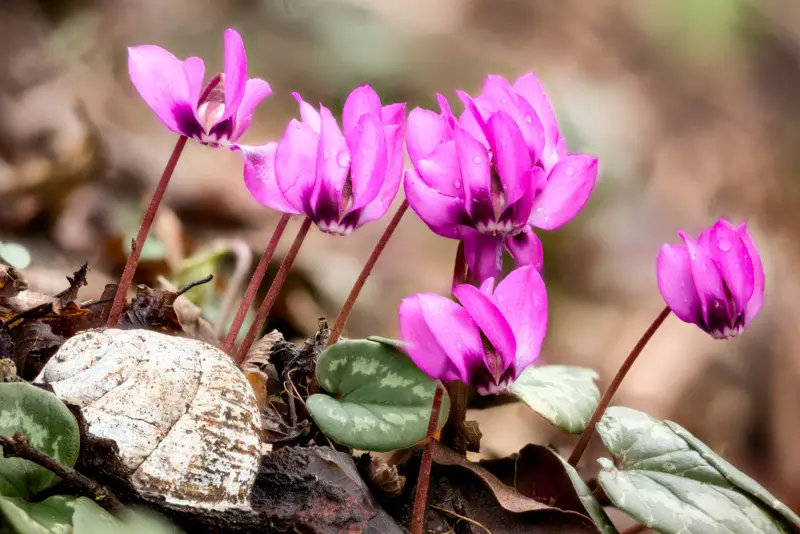
Also known as the Eastern Snowbread, Cyclamen coum has pink bell-shaped flowers and rounded heart-shaped leaves. It sticks close to the ground, growing to a height of between 2 and 4 inches.
Cyclamen coum is a perennial plant that’s hardy in zones 5-8. In its natural habitat, it grows well in woodlands and rocky areas. Therefore, it’s important to plant it beneath shrubs or trees that provide adequate shade.
Plant your tubers in early fall so they’ll have enough time to grow and bloom in early spring. Place the tubers one inch deep and with a spacing of about six inches.
Pansies
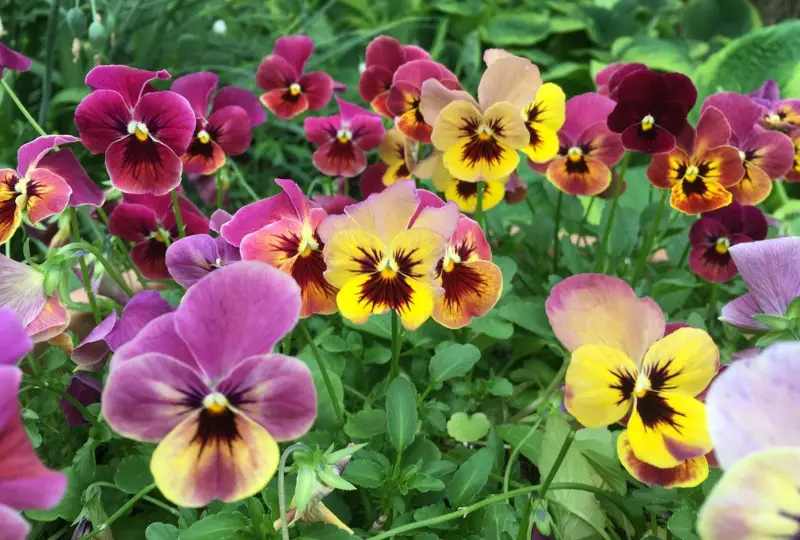
Pansies can reach 9 inches tall and bloom brightly colored flowers with overlapping petals. These petals have dark-colored splotches that appear like smiling faces. Pansies can spread to a width of up to 12 inches, so it’s important to space them.
They’ll do well in USDA hardiness zones 4-8, with acidic soils of pH between 5.4 and 5.8.
These plants need the sun, but too much will dry them out. Therefore, plant them somewhere they can soak in the morning sun but avoid the full afternoon sun. If you can’t find a good shady spot that allows this exposure, portable containers are your best bet.
Plant your pansies in the fall and water regularly throughout the growing stage. Pansies bloom for a long time, and their flowers will grace your garden all spring. Just ensure to remove the dead flowers to boost the production of fresh blooms.
Daffodils
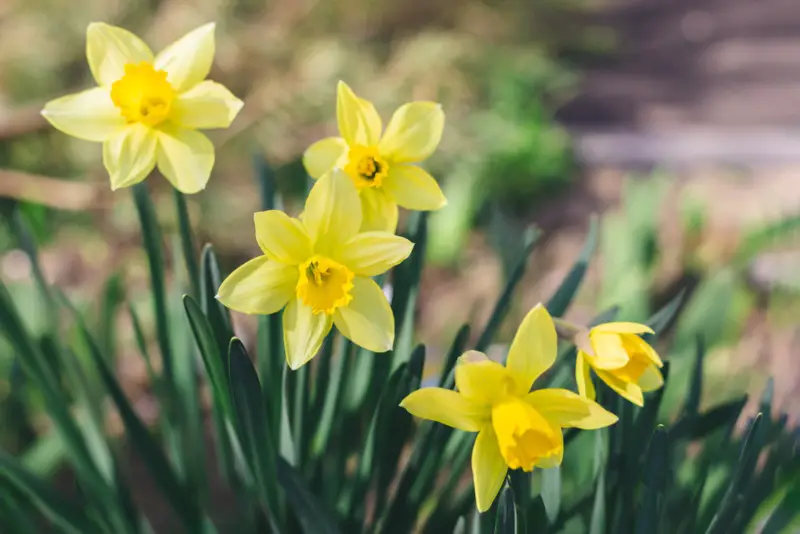
Certain varieties of daffodils are the perfect early spring plant—you don’t even have to wait for spring because they can bloom in late winter. Such varieties include February gold, Rip van Winkle, ice follies, and early bride.
Daffodils do well in USDA hardiness zones 3-8, are very tolerant to cold and thrive under full sun. Avoid shady spots since this can keep them from flowering. The soil should be rich in organic matter and drain well. Plant daffodils in the fall, burying the bulbs about 4 inches deep.
They look great in groups or scattered naturally in the grass. But, don’t overcrowd them as this too will hinder flowering.
Single Early Tulip
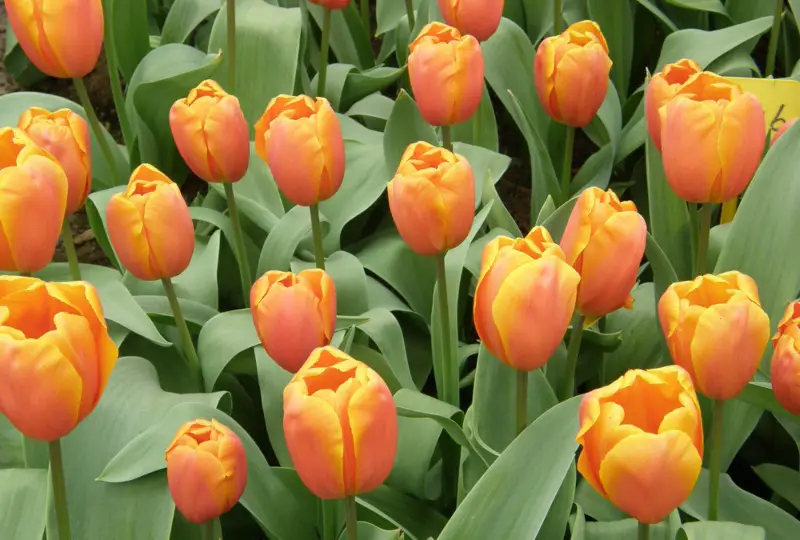
The single early tulip has a strong stem that can grow 10-18 inches tall, with a single bell-shaped flower blooming at its end. Flowers can be yellow, pink, white, orange, and a range of other bright colors.
It is best to plant single early tulips during fall, about six weeks before the ground freezes. You’ll need to choose a location where they can enjoy the full afternoon sun. Water the bulb right after planting to activate rooting.
Crocus
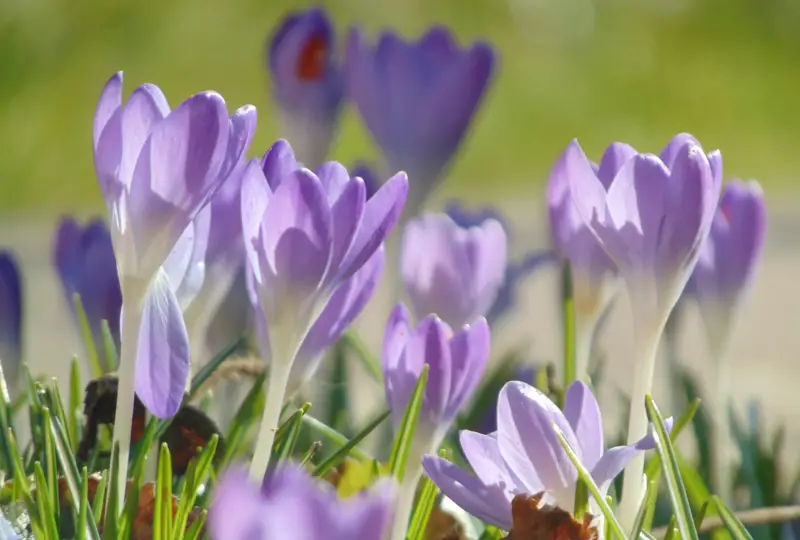
Crocuses have grass-like leaves and goblet-shaped flowers blooming at the end of a narrow tube. The flowers come in shades of yellow, red, orange, pink, and more. A crocus can grow between 2-4 inches tall and is suitable for USDA hardiness zones 3-8.
The best time to plant crocuses is in fall when the soil temperature is below 60 Fahrenheit degrees and before the ground freezes.
Bury the crocus corm 3-4 inches deep in well-drained soil. The soil should stay moist but not soggy, as this can make the corm rot and prevent growth. Cover the site with mulch throughout winter and only remove it in late February for the shoots to appear.
Claytonia Spring Beauty
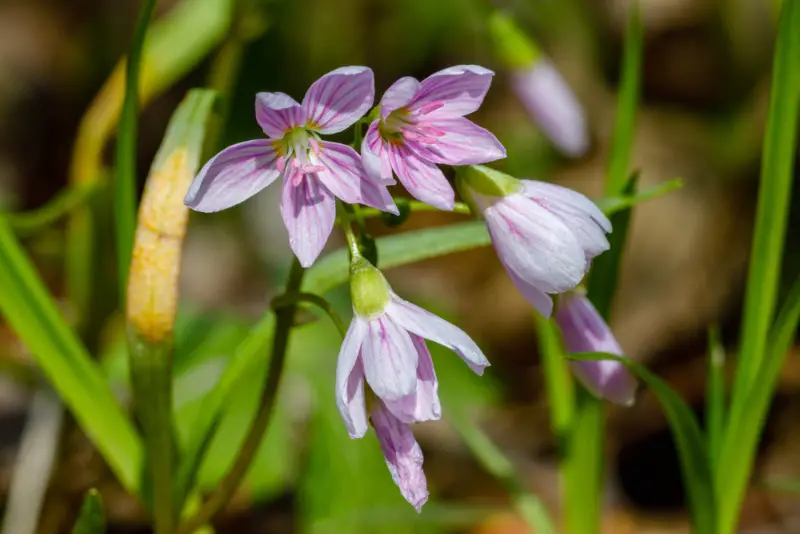
The Claytonia spring beauty is native to the Midwest and grows well in USDA hardiness zones 6-9. Its star-shaped flowers come in pink or white, with the petals having dark pink veins.
Plant the spring beauty during fall in well-drained soil and keep it moist. Claytonia grows naturally in the woodlands, so a forested patch of your garden will be a great site. If the plants have frequent exposure to full sun, water them regularly to keep the soil from drying.
Hellebore
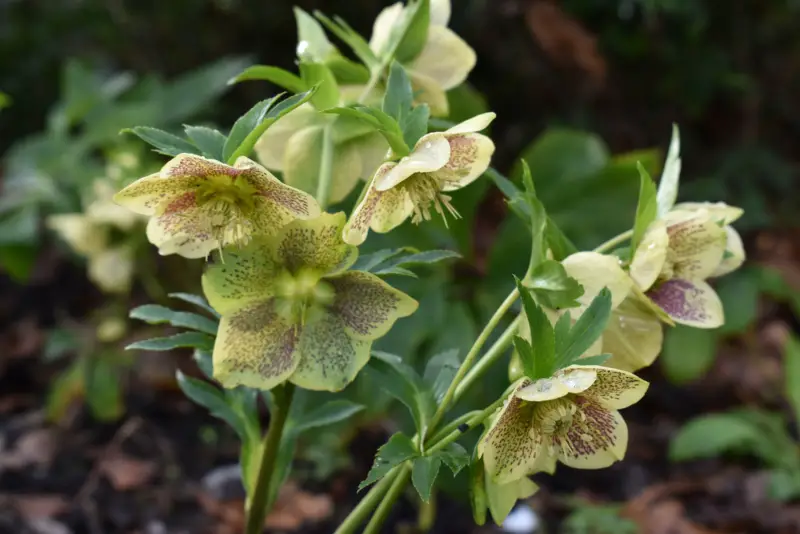
Also known as the hybrid lenten rose, hellebore is a plant that grows well in USDA hardiness zones 4-9. Growing up to 24 inches tall, it has upright stems and saucer-shaped flowers.
Hellebore needs shade to grow and bloom well, plus rich soil with good drainage. You’ll need to water it often during its growth stage.
For hellebores to flower in early spring, plant them in late fall, about five weeks before the first hard frost hits the ground. This gives the roots enough time to develop well before the cold temperatures come around.
Primrose
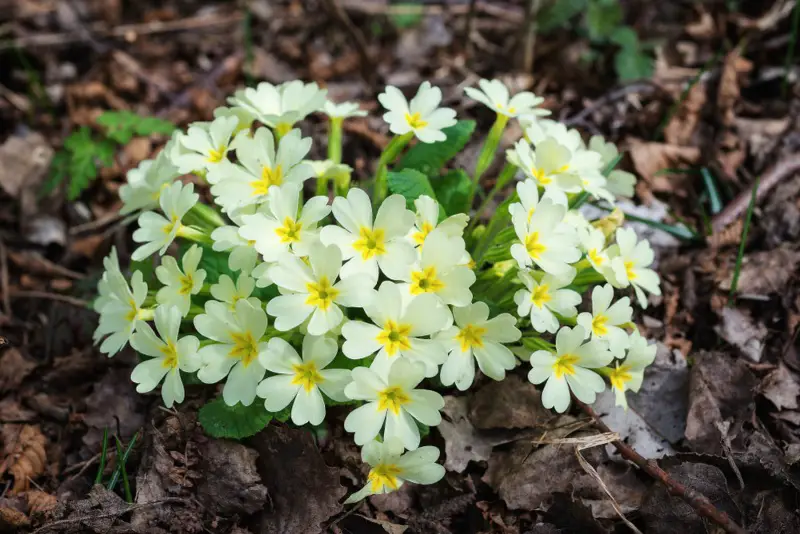
Primroses grow to a height of up to 12 inches and have flowers that bloom in a rainbow of colors, including white, yellow, and blue. These perennial herbs are suitable for USDA hardiness zones 4-8.
Plant your primrose seeds in early autumn when the soil is still warm. This gives them a head start before winter when primroses usually become dormant. The soil should be slightly acidic and moist. To boost growth, enrich them with leaf mold and compost.
During spring, your primroses should be in the sun, while a bit of shade is necessary during summer.
Conclusion
Fall is when you need to be selecting and planting your plants for a lovely early spring garden. Depending on your zone and the plant you choose, you might need to do the planting earlier or later in the fall. Once your seeds, tubers, or bulbs are in the ground, you can rest easy knowing that at the first glimpse of spring, your effort will be rewarded.

